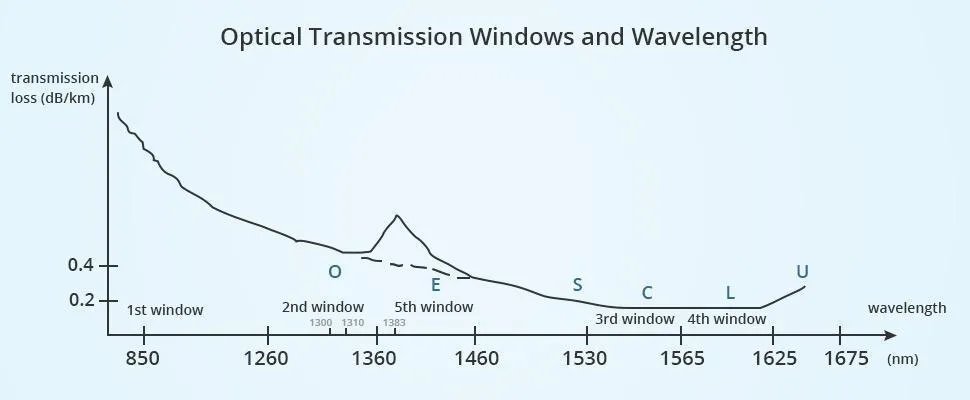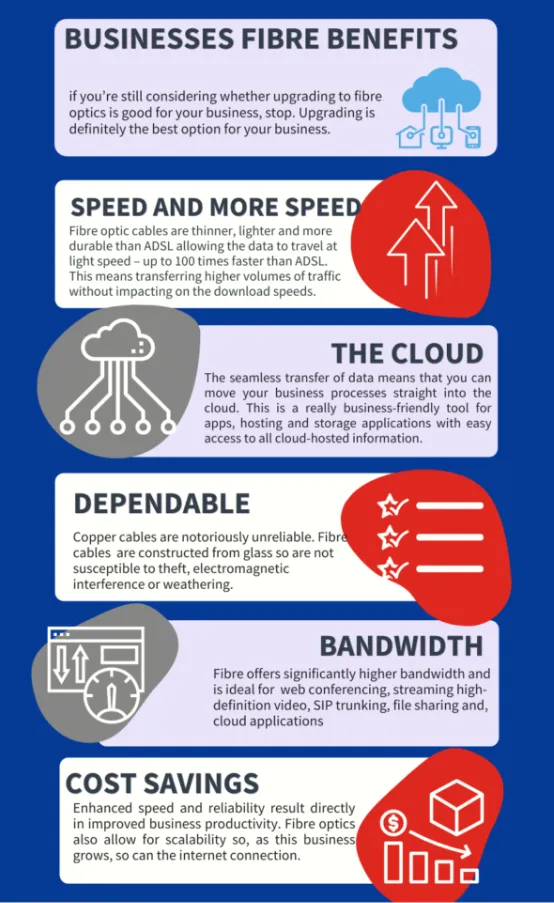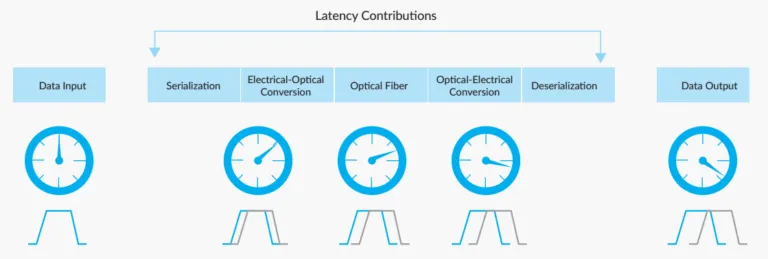If you intend on building a campus network that requires high speeds, optimal bandwidth, and high-speed connections, then fibre optic cabling can be your ideal pick.
As the demand for instantaneous access is increasing among businesses, organizational practices must assess the efficacy of their network infrastructure. High latency and slow speed will potentially deprive you of business productivity.
Thus, fibre optic cabling is one of the best implementations that re-initiates proper network system integration. This article will give you a closer insight into the varying effects of fibre optic cabling on your enterprise networks.
1. Faster Transmission of Data and Information

Figure 1- Relation to the Transmission Loss of Fibre Optic Cable and Wavelength
Image Source- community.fs.com
One of the most astounding effects of fibre optic cabling on enterprise infrastructure networks is the improved speed of data or information transmission. The usual way of measuring transmission speed is in gigabits per second or terabits per second.
With the standardization of copper cables in the past, the transmission speed was maxed out at 40 GB/s. But, with the integration of fibre optic cabling into enterprise networks, the speed of data transmission is currently around 400 GB/s and will exceed the benchmark of 800 GB/s or beyond in the long run.
2. Introduces the Ability to Transmit Data to a Farther Distance
Unlike copper cables, which are limited to transmitting data efficiently over a maximum distance of 100 meters or less, when your business network infrastructure needs to transmit data over even longer distances, optical fibre cabling will have an advantage over copper cables. Unlike copper cables, fibre is immune to electromagnetic interference and weather conditions. This makes fibre networks inherently more reliable and secure.
Fibre optic cabling can be designed with varying distance ranges for data transmission, depending on the business applications. One pulse of light passing through the optical fibre can travel around 60 miles before starting to degrade. But, with the use of optical amplifiers, these signals can be retained and further transmitted thousands of miles away without loss of data.
Fiber has the least downtime, and the lowest cost per GB, and it can provide services to very high data usage customers. The other advantages include lightweight, freedom from interference, electrical isolation, and security.
3. Immune to Electromagnetic Interference

Figure 2- Advantages of Optical fibre Cabling for Enterprises
Image Source- ecn.co.za
One of the most cherished effects of optical fibre cabling is its immunity to electromagnetic interference. This problem often happens with coaxial or copper cables, which slow down their real and best transmission speed.
There is a possibility that when the copper wires are placed next to one another, the electromagnetic interference will result in the loss of various data packets or will end up corrupting them. Thus, it might lead to a high amount of retransmission.
Fiber optic cabling, used in network system integration, has immunity to electromagnetic interference. It is because they transmit the signals through light pulses. And as per scientific evidence, the integrity of the signal isn’t hampered by electrical noise or interferences.
With the introduction of fibre optic connections, data is isolated from dangerous circumstances such as ground loops, electromagnetic or radio frequency interference, and ground potential. The vulnerable security parameters are also removed, as data cannot be accessed through the magnetic field around them.
4. Expect a Better Latency Rate with Fibre Optic Cabling

Figure 3- Different Latency Contributors in Fibre Optic Cabling
Image Source- fibre-optic-tutorial.com
Latency is defined as the time that a signal takes to travel from its source to its destination. Thus, the lower the latency, the better the transmission response.
Optical fibre cabling, used in enterprise infrastructure networks, transmits data at around 100 GB/s. So, every time an optical signal passes through the fibre link, it comes across five different latency contributors.
Two of these latency contributors exist when the signal moves from an electrical to an optical domain. The next contributor occurs when the signal passes through an optical fibre. So, in the end, latency occurs when the signal finally converts again from the optical to the electrical domain.
In comparison to copper cables, fibre optic cabling systems will have lower latency, as the need for repeating or processing the signals is less.
5. Enhanced Cloud Accessibility
As of today, more than 94% of all enterprises are using cloud services. More than 67% of the enterprise infrastructure is completely based on the cloud, and 92% of all businesses work with a multi-cloud strategy in their workplace. Some common enterprise applications in the cloud are application access and data storage.
Fiber optic infrastructure solutions are being made to provide the best deployment for enterprise networks and mission-critical applications. This will enable complex cloud computing data centers and make sure they can meet the growing demand for better connectivity and scalability.
Conclusion
So, this briefly explains the five major effects of implementing fibre optic cabling on your enterprise infrastructure networks. STL is your one-stop hub to help you with core optical fibre connectivity solutions to meet your enterprise’s specific requirements for network system integration. To learn more about it, do visit this page- https://www.stl.tech/optical-connectivity-solutions/
FAQs
1. Is there a possibility of data leakage from the fibre cables while traveling at a faster speed?
The light pulses travel so fast within the fibre cables that there’s a risk of them leaking from the edges, causing data loss. So, to maintain the speed and protect the data from leakage, cladding is done around the fibre cable.
It allows the light to consistently bounce off the walls while traveling at light speed instead of leaking out from the edges. Hence, this is the overall ideology of fibre optic cabling for transmitting to a farther distance at high speed without any attenuation.
2. How does fibre optic cabling protect your organizational infrastructure?
Fibre optic cabling helps prevent your data from experiencing electromagnetic interference. In this way, the security aspects are enhanced for your data. There will be no data loss or need for retransmission when using fibre optic cables. The adversaries’ attacks won’t make it possible to retrieve your data through the magnetic field. Thus, protection is ensured.
3. What is the base role of fibre optic cables within an enterprise network?
Fundamentally, fibre connectivity in enterprise network infrastructure is solving the complexity problem and making the network simpler to deploy and manage. Ultimately, improving the network’s reliability and providing adaptability will allow it to evolve as user demand and the new applications require.
4. How fast is the fibre optic internet?
Fibre optic internet is said to be around 20 times faster than the usual cable internet and 80 times faster than DSL (Digital Subscriber Line) internet.













